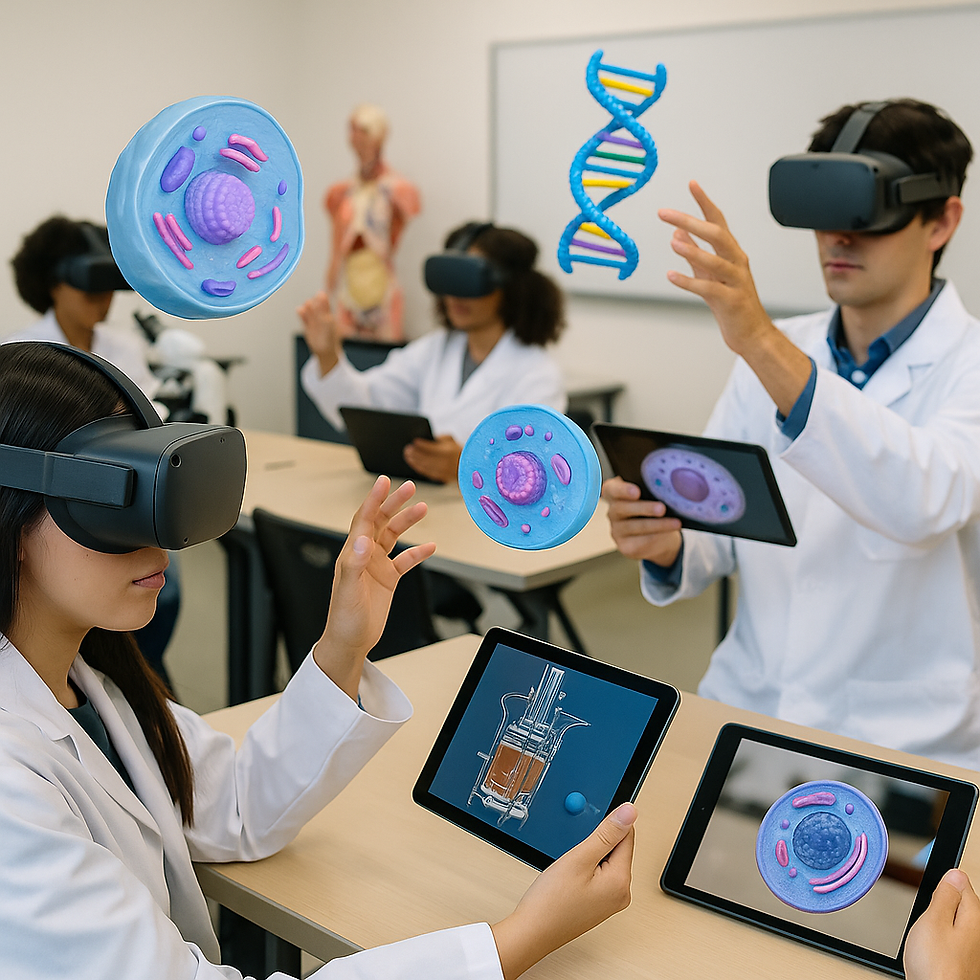Blog #6: Gene Editing Comes Alive: Creating an Interactive Learning Object with H5P
- Melissa B
- May 4
- 2 min read
Visit my H5P site here: https://georgiancollege1.h5p.com/content/1292575953776100368

In biotechnology education, few topics capture students' curiosity as much as gene editing. But explaining the precision and complexity of CRISPR-Cas9 in a classroom, especially online, can be challenging. That’s why I created an interactive learning object using H5P, designed to bring the CRISPR process to life through visuals, quizzes, and scenario-based learning.
This learning object, titled "Welcome to CRISPR in Action," is based on one of the immersive VR ideas from my Module 7 proposal. While full virtual reality simulations are powerful, not every learner has access to headsets or high-end hardware. H5P offered a browser-based alternative that supports accessibility and interactivity across devices - perfect for college biotechnology students learning in hybrid formats.
🎯 Learning Objective
Learners will be able to identify and describe the five stages of CRISPR-Cas9 gene editing and apply their knowledge to propose appropriate gene-editing strategies in a patient case study.
📚 Content Overview
The objective starts with an explainer of CRISPR-Cas9, to walk students through:
Target DNA identification
Guide RNA binding
Cas9 cleavage
DNA repair (NHEJ and HDR)
Verification of edit success



Comments